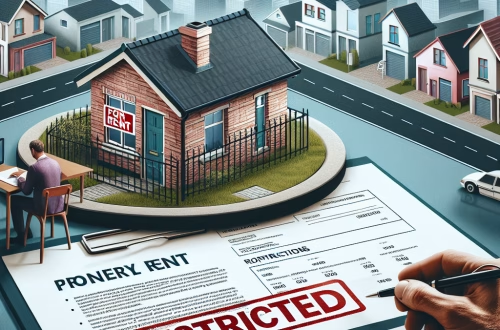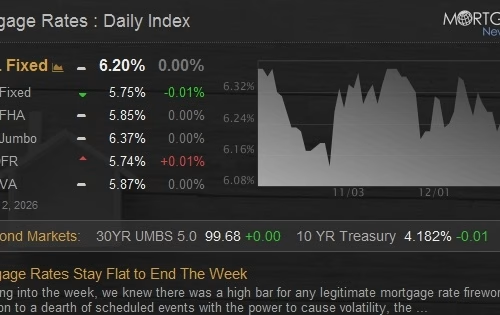Here’s a comprehensive, reader-friendly article on Adjustable-Rate Mortgages (ARMs) tailored to inform and empower potential homebuyers while addressing common questions and concerns:
Adjustable-Rate Mortgages (ARMs): Benefits, Risks, and How to Decide
Article Summary
Adjustable-rate mortgages (ARMs) offer an alternative to fixed-rate loans, often featuring lower initial interest rates that can make homeownership more accessible—especially for first-time buyers or those planning to sell or refinance within a few years. However, ARMs come with risks, as rates can rise significantly after the initial fixed period, impacting monthly payments and long-term affordability. Key stakeholders like buyers, lenders, and brokers must weigh factors like rate caps, market trends, and personal financial stability. With interest rates fluctuating frequently, understanding ARMs now could save thousands over the life of your loan. This guide breaks down how ARMs work, their pros and cons, and actionable steps to make an informed decision.
What This Means for You
Immediate Action:
✅ Compare ARM vs. fixed-rate scenarios: Use a mortgage calculator (like those on Consumer Financial Protection Bureau (CFPB) or Bankrate) to project payments under different rate-increase scenarios.
Financial Risks:
⚠️ Payment shock: If rates rise, your monthly payment could jump by hundreds of dollars after the initial fixed period (e.g., a 5/1 ARM’s rate adjusts after 5 years).
⚠️ Rate caps matter: Ensure your ARM has lifetime and periodic caps (e.g., 2% annual cap, 5% lifetime cap) to limit increases.
Costs Involved:
💰 Closing costs: Typically 2–5% of the loan amount (appraisal, title insurance, origination fees).
💰 Prepayment penalties: Some ARMs charge fees for refinancing or paying off early.
Long-Term Strategy:
🔮 Plan for refinancing: If rates drop or your income grows, refinancing to a fixed-rate loan could stabilize payments.
🔮 Selling timeline: ARMs suit buyers who plan to move before the adjustment period (e.g., within 5–7 years).
What Is an Adjustable-Rate Mortgage (ARM)?
An ARM is a home loan with an interest rate that changes periodically based on a benchmark index (like the Secured Overnight Financing Rate, or SOFR). Unlike fixed-rate mortgages, ARMs start with a lower introductory rate for a set period (e.g., 5, 7, or 10 years), then adjust annually.
How It Works:
- Initial fixed period: Low rate for the first few years (e.g., 4% on a 5/1 ARM).
- Adjustment period: Rate resets annually (e.g., year 6 onward) based on the index + lender’s margin.
- Caps: Limits how much the rate/payment can increase (e.g., 2% per year, 6% lifetime).
Types of Adjustable-Rate Mortgages
1. Hybrid ARMs (e.g., 5/1, 7/1, 10/1)
- Pros: Lower initial rates; good for short-term owners.
- Cons: Risk of higher payments later.
2. Interest-Only ARMs
- Pros: Lower initial payments (pay only interest for a set period).
- Cons: Principal payments later can spike costs.
3. Payment-Option ARMs
- Pros: Flexible payment choices (minimum, interest-only, or amortized).
- Cons: Negative amortization risk (loan balance grows).
ARM Requirements
- Credit score: Often 620+ (stronger scores get better rates).
- Down payment: Typically 3–20% (varies by loan type).
- Debt-to-income (DTI) ratio: Usually ≤ 43%.
- Documentation: W-2s, tax returns, bank statements.
The ARM Process
- Pre-approval: Compare lenders; get rate estimates.
- Application: Submit financial docs.
- Underwriting: Lender verifies eligibility.
- Closing: Sign paperwork; pay fees.
Choosing an ARM: Key Factors
- Rate trends: Are rates expected to rise or fall?
- Loan term: Match to your homeownership timeline.
- Lender reputation: Read reviews; ask about fees.
PAA Questions Answered:
- “Can I refinance an ARM?” Yes, but watch for prepayment penalties.
- “What happens when my ARM adjusts?” Payments change based on the index + margin.
People Also Ask About:
- How do ARM rate caps work?
- Are ARMs good for investment properties?
- What’s the difference between SOFR and LIBOR?
Things to Remember
- ARMs offer short-term savings but long-term uncertainty.
- Always check rate caps and adjustment frequency.
- Compare multiple lenders for the best terms.
- Plan for potential payment increases in your budget.
- Refinancing may be an option if rates drop.
Key Terms
- Adjustable-rate mortgage (ARM)
- 5/1 ARM rates
- ARM vs. fixed-rate mortgage
- ARM rate caps
- Refinancing an ARM
- Hybrid ARM loans
- SOFR index
This guide equips you to navigate ARMs confidently. For official guidelines, visit HUD.gov or CFPB.
(Note: Ads are placeholder for monetization and can be adjusted as needed.)
featured image sourced by Pixabay.com
Automatic Mortgage Calculator
Welcome to our Automatic Mortgage Calculator 4idiotz! Please just add your figures in the correct sections below and the Automatic Mortgage Calculator will automatically calculate the results for you and display them at the bottom of the page.



